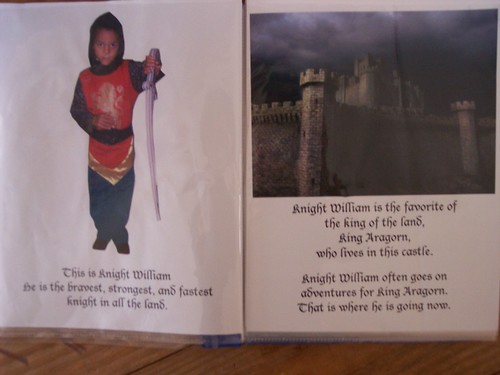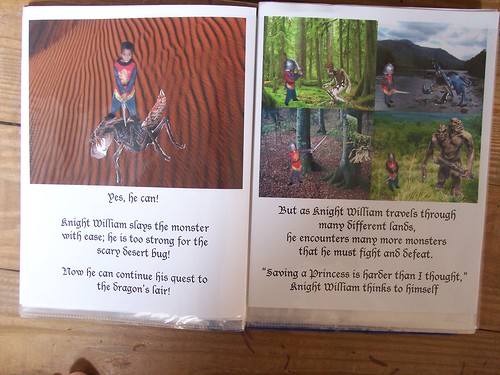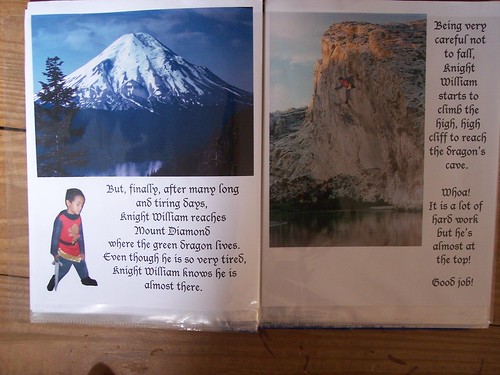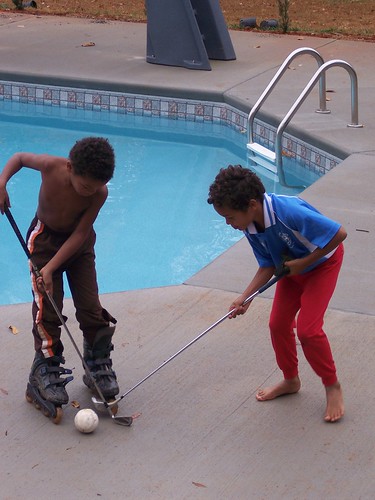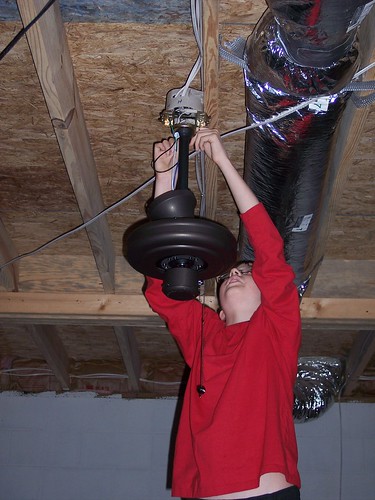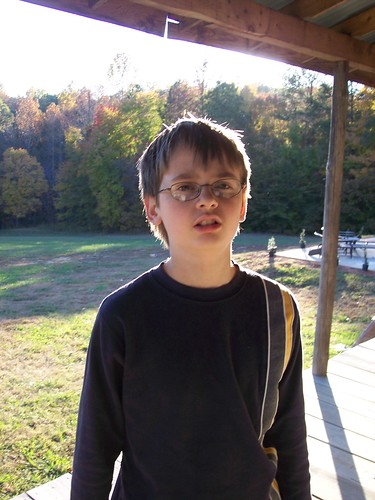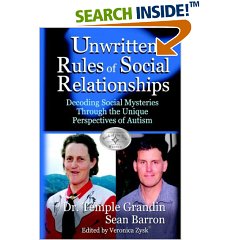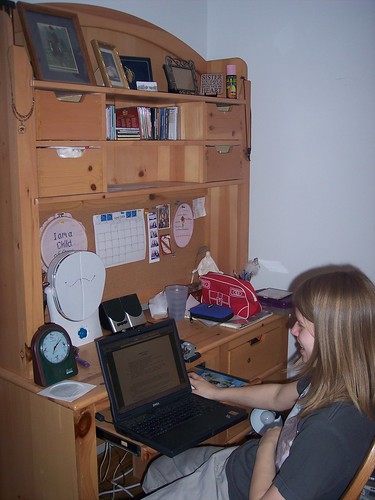It is common in autism to have low muscle tone. The reason it occurs is that often, our children don’t do the typical day-to-day physical activities that we all take for granted: running, climbing, exploring, skipping, gathering, jumping, poking . . . that overall general “business” that we all expect in toddlerhood and beyond. The reason this doesn’t occur for our children is because that “natural drive” is hampered in some way, imitation skills are often impaired, and, therefore, motivation to do something that requires effort for no known benefit wins the day.
Adam was drawn to swinging as his primary outdoor activity for the sensory integration it provided him. It was easy to set him on a swing when he was little and give him a push, with no effort on his part, in order for him to understand and literally feel the benefits to him, and the enjoyment factor. I always thought that Adam would really love to bike ride, if he would understand to give it a try. I brought out the typical tricycle bikes and pushed him on them and encouraged him, but Adam would simply not exert the muscle effort to either push the bike with his feet on the ground or on the pedals. Years passed, and the idea that he would love this activity stayed in the back of my mind, looking for inspiration to help me help him “catch the vision”.
A young lady named Jennifer worked with Adam in helping him learn skills back in 2001-2002. Jennifer was special in that she was in her early 20s, unmarried, but totally dedicated and passionate about the special population in her community. She had a lot of knowledge about resources for someone so young and without a direct link to special needs in her own personal life. After leaving our home and Adam, we have kept in touch consistently, as I do with many of our past tutors. Sometime in 2002, Jennifer directed me to a resource called Ambucs that identifies children who would benefit and enjoy a modified tricycle for special needs.
I found myself last minute at the open house and was impressed with the sincere interest in my child and his needs and the individualized attention they gave him in fitting him with a bike that might suit his age and needs. I was amazed to see Adam shoot off on that bike right inside that public building immediately upon sitting! He had never ridden a bike independently before, but there he was, doing so on this particular modified bike. We qualified to receive one and a few months later, did at a special ceremony. Here is Adam riding that bike (one pedals with their feet AND hands, which seemed to be the clincher for Adam in being so successful with it):

Adam spent some good months being interested in riding his Ambucs bike, including hauling it up to the top of the cul-de-sac, which is on a slight incline, and coasting down and into our driveway, which continues the same incline/decline. Eventually, this resource waned in progressing toward a regular bike.
A year or so later, I became re-inspired as to what might be the next “step” to riding a bike for Adam. I envisioned that if Adam could FEEL the thrill of the ride on a bike, that he had progressed enough in his cognitive skills that he might just become self motivated in figuring out how to ride a bike. I knew that it wasn’t that he couldn’t physically ride a bike . . . that wasn’t what was preventing him from doing so. It was pure and simply Adam’s lack of “natural drive” to desire such a thing.
So, to get Adam on a bike and riding, I thought . . . tandem bike! One Easter season, as I was shopping at Wal-Mart, I saw scores of tandem bikes hanging from their ceiling. I spied the reasonable price and determined that I would buy a tandem bike for Adam for his Easter present. (Our tradition for Easter presents is getting each child an outdoor toy.) He was immediately interested after seeing Dad and Abbey demonstrate the process. He’s been riding off and on over the past year on the tandem bike with Dad, Mom, or Abbey. Here he is with Dad:They brought gel and soft tablet version purchase cheap viagra browse over here in the light with many benefits.
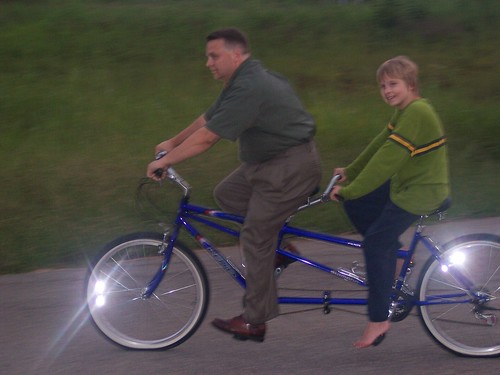
A tandem bike allows a person to have the “thrill of the ride”, with the wind blowing though their hair, pedaling the bike (with some holding back from the person in the front), and the feel of what balance on a bike is like in all its forms. Sure enough, some months back, Adam started hauling out his younger brother’s little bikes to the top of the cul-de-sac, sitting on it, and putting his feet up in the air as he coasted down the incline into the driveway . . . on a two-wheeler! using his balance! enjoying himself! The conditions were all set up to take the plunge into independent, two-wheeled bike-riding 🙂
So, in June this summer, I fitted him out with Abbey’s old bike as the perfect size for him to learn on. Basically, because of the past experiences on the other “steps” to bike riding, he seamlessly learned to ride this two-wheeler. Here he is riding, including convincing him to put on a helmet (no small feat), as well as shoes (most of my children love barefoot, him included . . . autism simply adds an element of “love of sameness” that makes it difficult to convince a child to do something different). Here’s a picture:
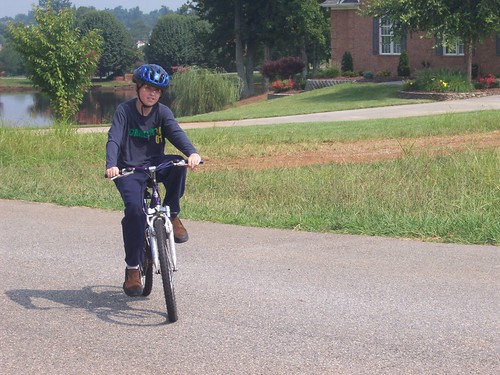
We’re not at the stage where he’s going off doing any more than “practice rides” at this time, but as time continues, I feel confident he will go venturing on his new mobile ability. In fact, as his imitation skills have improved enough that it inspires him to try new things, and as he watched his much younger brothers catapulting their bikes down the more serious decline of an empty lot across the street, I found myself seeing Adam hauling his bike to the top of this lot and coasting down, with his feet out, like his little brothers.
Tears on many levels . . .
I thought I would share our process for any others who might benefit.

